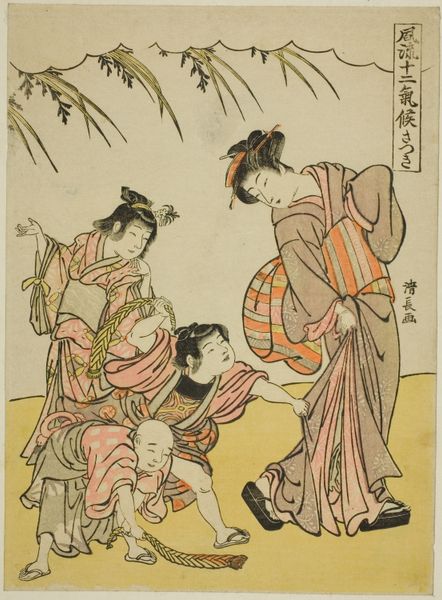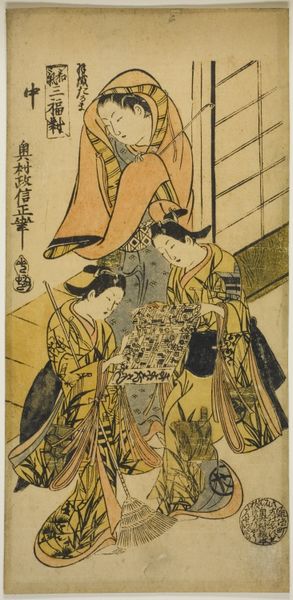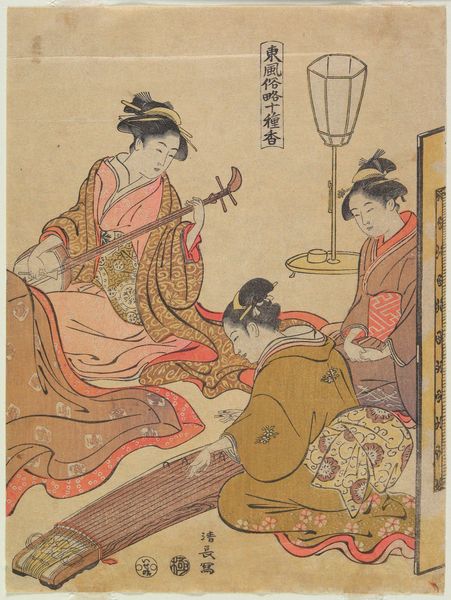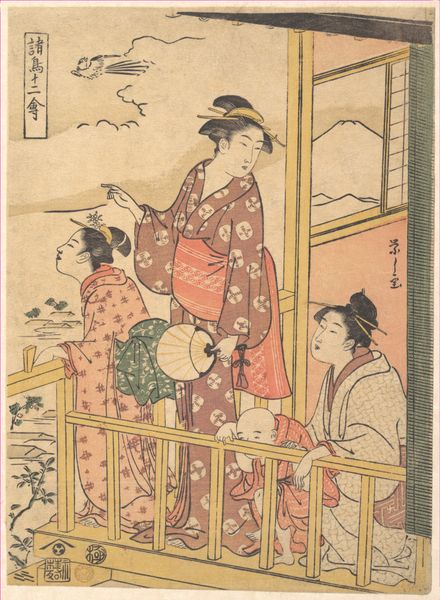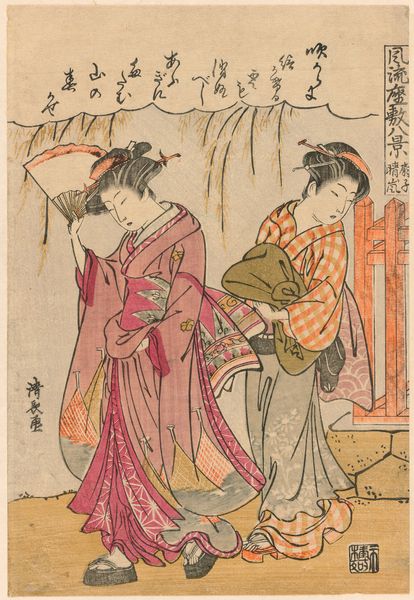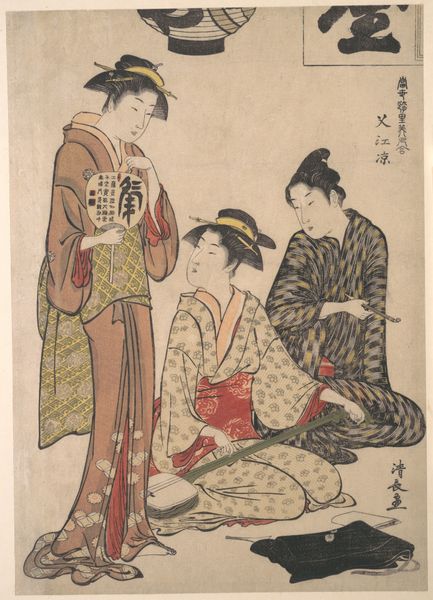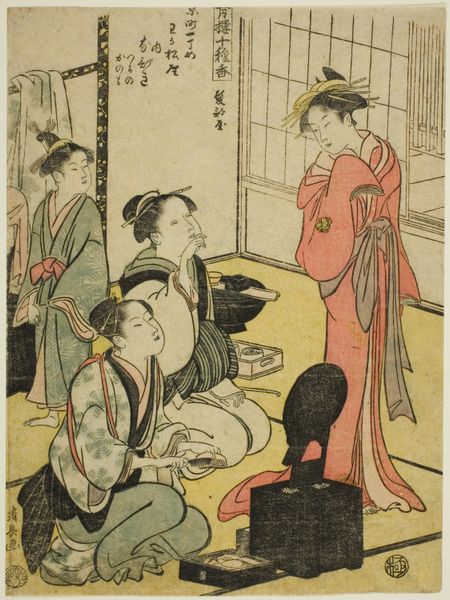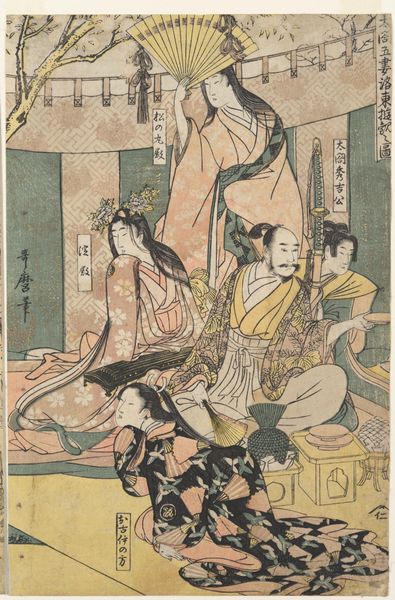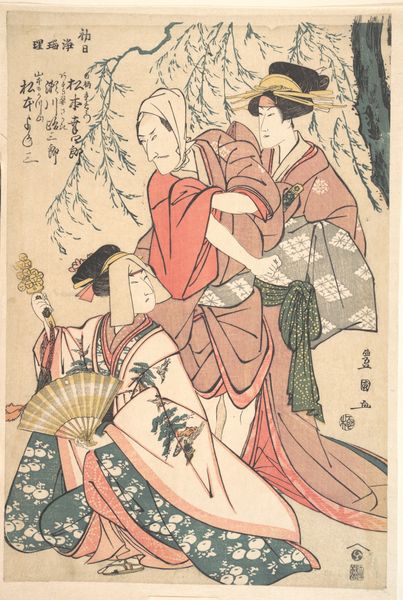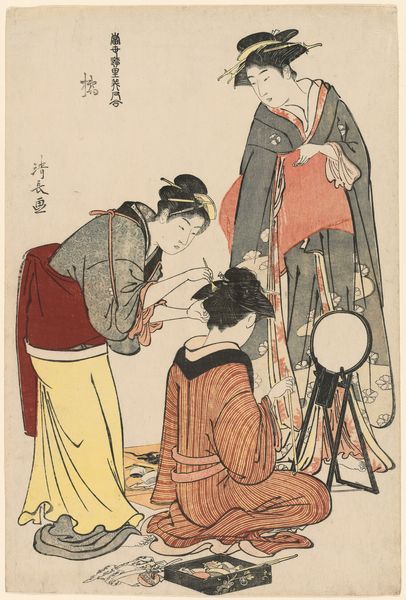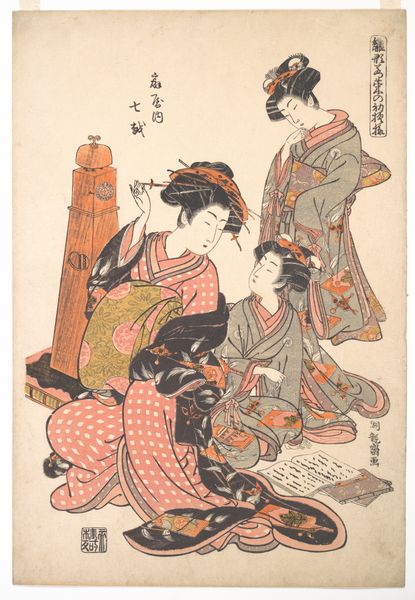
print, ink, woodblock-print
#
portrait
# print
#
asian-art
#
ukiyo-e
#
ink
#
woodblock-print
#
japanese
#
genre-painting
Dimensions: 8 5/16 × 6 1/16 in. (21.1 × 15.4 cm) (sheet, vertical chūban)
Copyright: Public Domain
Editor: Here we have Katsushika Hokusai’s “Monkey Handler,” created around 1790. It's a woodblock print using ink, quite a different feel from his later landscapes, isn’t it? The expressions of the figures, especially the woman, feel so staged, almost like a scene from a play. What strikes you about this piece? Curator: It’s a wonderful example of *ukiyo-e* genre painting, placing the "floating world" under scrutiny. While the woman may seem passively staged, note her placement relative to the seated man and monkey: Hokusai is likely commenting on the social dynamics of entertainment and class within Edo period Japan. The print medium itself facilitated wider circulation of such scenes, influencing public perception and artistic trends. Does the dynamic feel staged to control how different audiences perceived these interactions? Editor: That’s fascinating! So, it’s not just a simple depiction of people with a monkey, but a reflection of social hierarchies and performance? I hadn’t considered that. Curator: Precisely. Think about where this print would be displayed and by whom. It's also worth examining the textual inscription in the top corner: What role might poetry and humour play in how this particular art piece circulates within society? Editor: That completely changes my perspective. I was focusing on the aesthetics, but the social commentary adds a whole new layer. The commercial print format made social critiques accessible to broader audiences. Curator: And what a savvy strategy it was. By packaging commentary within seemingly innocuous entertainment, Hokusai could subtly shape public discourse. Editor: I definitely learned that the art object never speaks in isolation and the power structures play key roles. Thanks! Curator: Indeed, analyzing visual culture this way enhances how we understand power in the past.
Comments
No comments
Be the first to comment and join the conversation on the ultimate creative platform.
